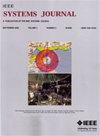Enhancing the Stealth of Load Redistribution Attacks: A Novel Cluster-Driven Approach
IF 4.4
3区 计算机科学
Q1 COMPUTER SCIENCE, INFORMATION SYSTEMS
引用次数: 0
Abstract
This letter proposes a novel cluster-driven bilevel Load Redistribution (LR) attack model in cyber physical power systems. The main goal is on overloading multiple transmission lines while maintaining a high level of stealth. The proposed model employs cluster-based approach to form distinct clusters, each representing different load patterns within the power system. This enables the design of attack vectors that seamlessly blend with these load patterns, thereby challenging advanced anomaly detection systems. The stealth of the attack is quantified by the Stealth Distance Index (SDI), ensuring that injected false data remain within the maximum permissible distance from the centroid of its corresponding cluster. The proposed model is validated on the modified IEEE 14-bus and 30-bus systems, demonstrating enhanced stealth capabilities in LR attacks.增强负载重分配攻击的隐蔽性:一种新的集群驱动方法
本文提出了一种新的集群驱动的双级负载重分配(LR)网络物理电力系统攻击模型。主要目标是使多条传输线过载,同时保持高水平的隐身性。该模型采用基于集群的方法形成不同的集群,每个集群代表电力系统内不同的负荷模式。这使得攻击向量的设计能够与这些负载模式无缝融合,从而挑战高级异常检测系统。攻击的隐身性通过隐身距离指数(SDI)来量化,确保注入的虚假数据保持在与其相应簇的质心的最大允许距离内。该模型在改进的IEEE 14总线和30总线系统上进行了验证,展示了增强的LR攻击隐身能力。
本文章由计算机程序翻译,如有差异,请以英文原文为准。
求助全文
约1分钟内获得全文
求助全文
来源期刊

IEEE Systems Journal
工程技术-电信学
CiteScore
9.80
自引率
6.80%
发文量
572
审稿时长
4.9 months
期刊介绍:
This publication provides a systems-level, focused forum for application-oriented manuscripts that address complex systems and system-of-systems of national and global significance. It intends to encourage and facilitate cooperation and interaction among IEEE Societies with systems-level and systems engineering interest, and to attract non-IEEE contributors and readers from around the globe. Our IEEE Systems Council job is to address issues in new ways that are not solvable in the domains of the existing IEEE or other societies or global organizations. These problems do not fit within traditional hierarchical boundaries. For example, disaster response such as that triggered by Hurricane Katrina, tsunamis, or current volcanic eruptions is not solvable by pure engineering solutions. We need to think about changing and enlarging the paradigm to include systems issues.
 求助内容:
求助内容: 应助结果提醒方式:
应助结果提醒方式:


